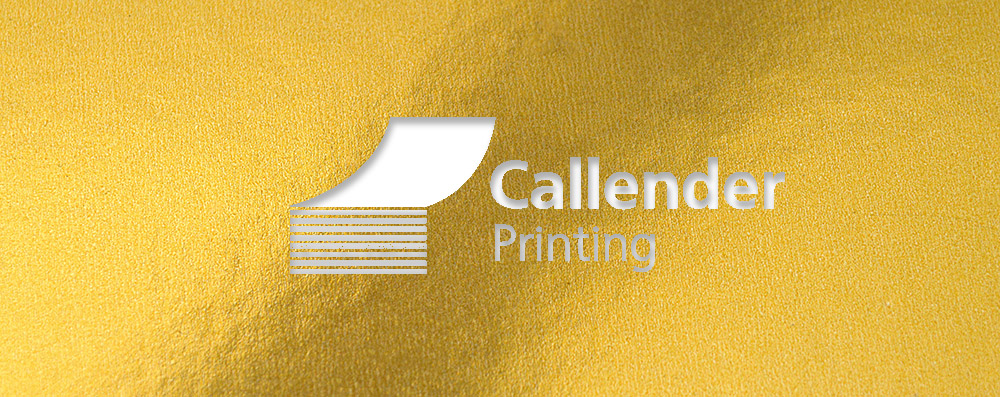All that glitters is not gold.
That’s as true in printing as it is in life. Foil stamping and metallic inks give you the opportunity to add a little shine and glitter to your print project—and it definitely doesn’t have to only be gold.
Metallic inks and foil stamping can bring class and sophistication to almost any printed piece, giving the impression of luxury. Take advantage of these techniques to make your printed invitation or promotional piece stand out from the crowd.
Go metallic
Metallic ink lets you add some shine without adding a lot of extra cost, creating the illusion of high-definition printing without the high-definition price. Metallic ink works because the opaque ink contains metallic particles that rise to the surface when the ink dries, giving that classic sparkle to the ink.
Metallic inks are a great way to add some visual interest, but keep these things in mind when designing pieces that use metallic inks:
- Metallic inks are not well-suited for use in small areas – There aren’t enough metallic particles in a small area to create the metallic look.
- Color options abound – Pantone alone has more than 650 metallic colors, which means there’s a metallic color available to match any need.
- Choose your paper stock wisely – Metallic inks work best on coated paper stock. With uncoated stock, the ink will sink into the pores of the paper, which will dilute the metallic effect. Uncoated stock may require two coats of metallic ink to achieve the desired effect. According to Graphic Arts Magazine, “The harder and less porous the stock (such as a gloss coated stock) the greater the metallic effect produced.”
- Plan to use a protective coating – A protective coating keeps the ink from rubbing off when the printed piece is handled. Protective coatings can increase the price of your print job, so keep that in mind when creating a budget for your project.
- Set a realistic budget and timeline – Metallic inks are more expensive than regular ink. They also take longer to dry and longer to prepare for printing, which may affect how quickly your piece can be printed. If you’re planning for the finished product to be run through a high-heat digital press, then your printer may need to use specially formulated metallic ink.
While metallic inks can give you plenty of sparkle and shine, they won’t create the boldest shimmer. If you’re looking for the most intense metallic look, your best bet is foil stamping.
Shine with foil
Foil stamping is a printing process that uses a metal die etched with a design. The die is heated, and a thin sheet of foil is placed between the die and the paper. Pressure is applied, which causes the foil to permanently bond with the paper. A separate die has to be used for each color of foil in the design.
If you’re looking for a high-intensity metallic look, foil stamping is the way to go, but there are some important things to keep in mind:
- Foil stamping can be used to create a variety of finishes – Based on the type of foil you choose, you can create matte, metallic, glossy and holographic finishes. Types of foil include metalized, pigment, pearl, effects, holographic and scratch-off.
- Choose the best sheen – Foils often come in two sheens: gloss and satin. The gloss sheen creates a mirror-like effect, and it works well in small areas. The satin sheen provides a more sophisticated look and holds color better than the gloss option.
- Keep your foil areas relatively small – When designing your printed piece, don’t make your foil areas any larger than 2 inches by 3 inches. It’s hard to get foil to adhere well in areas larger than that.
- Avoid mixing larger areas of foil with fine detail – Keep areas that require fine detail in the foil as small as possible. Larger chunks of foil require a different pressure to apply than those containing intricate details.
- Keep the budget in mind – Foil stamping can add costs to your printed item, and foil stamping that requires multiple dies will add even more. If your piece requires a lot of different metallic colors and cost is an issue, metallic ink might be a better option to keep the price down.
Get expert help
If you’ve never worked with metallic inks or foil stamping before, the idea can be daunting. But we’ve been working with both types of printing for years, and we’re happy to share our expertise with you. If you’re not sure which method is best for your project, just ask. We’ll help you make the best decision so your printed piece does indeed glitter like gold.
Dan Woehrman is owner of Callender Printing, offering full-service printing capabilities – including letterpress, offset and digital – with union craftsmen quality. Share your thoughts on Facebook or on Twitter @CallenderPrint.


Recent Comments